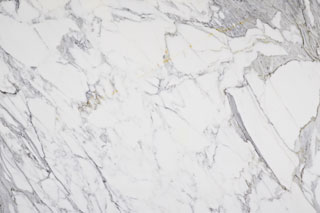
If you want to get technical,
marble is a non-foliated metamorphic rock made up of recrystallized carbonite
minerals. However, the less scientific description might be a versatile,
beautiful stone that is a captivating choice for sculpture and buildings.
From the ancient ruins of Greece
and Rome, to the halls of Ottawa's Parliament buildings, marble has
created an impression of grandeur and wealth. Michelangelo appreciated its
resistance to shattering and its soft, waxy look when he sculpted his famous
‘David'. The marble of the Washington Monument pierces the sky of the United States capital, and the
stone was also used by a lovesick Mughal emperor to honour his deceased wife in
the Taj Mahal.
The word marble derives from the Greek word
‘marmaron', or ‘shining stone'. The word's origin is appropriate because marble
was used in the construction of the Parthenon and Acropolis. However, the
Greeks didn't have a monopoly on the stone, and in fact, it is quarried around
the world. Carrara marble comes from Italy, Connemara from Ireland,
and Vermont and Georgia marble from their
respective American states.
Marble in the home
While in an early age it was used in the c
onstruction of great palaces and cathedrals, marble now graces many modern homes. It is
expensive, but its merits outweigh the cost. Marble exudes ‘quality' and can
significantly increase a home's resale value. Because no two pieces of marble
are alike, it always holds a visual fascination with its varied designs. Marble
is durable and resilient and can be used in high traffic areas. As a
construction material, marble is non-allergenic, and in the kitchen, its value
lies in its resistance to bacteria. It's not surprising that marble countertops
– sealed and easily cleaned – are now common. When used as flooring, marble is
easily cleaned and polished, and remains cool to the touch, staying comfortable
in the hot summer months.
The chief disadvantage of marble is the same thing
that makes it so attractive as a long-term investment – its cost. Moreover, the
flipside of its uniqueness of each piece is that it is difficult to match their
patterns, especially when using it as tile. Marble will scratch, and when used
as a counter, a cutting board is required. It can scorch, and drinks or spills
could stain it, especially if it is uncoated. As
flooring, unhoned marble is slippery when wet, and this is a
drawback for its use in washrooms.
Where to find
marble
The expense of marble dictates that you educate
yourself about the kind of marble you are purchasing and how it will be used.
The good news is that the uniqueness of marble means there are dealers out
there for whom marble is not a mere business, but a vocation, as well. Search
out a family operation that takes pride in this amazing stone. You are making a
lifetime investment, one which will enhance your property for years to come.
That requires an interested, engaged partner with specialized expertise. And,
finally: like anything worthwhile in life, marble requires care and attention.
A good dealer will want to take the time to educate you in the maintenance of
this incredibly beautiful, noble stone.